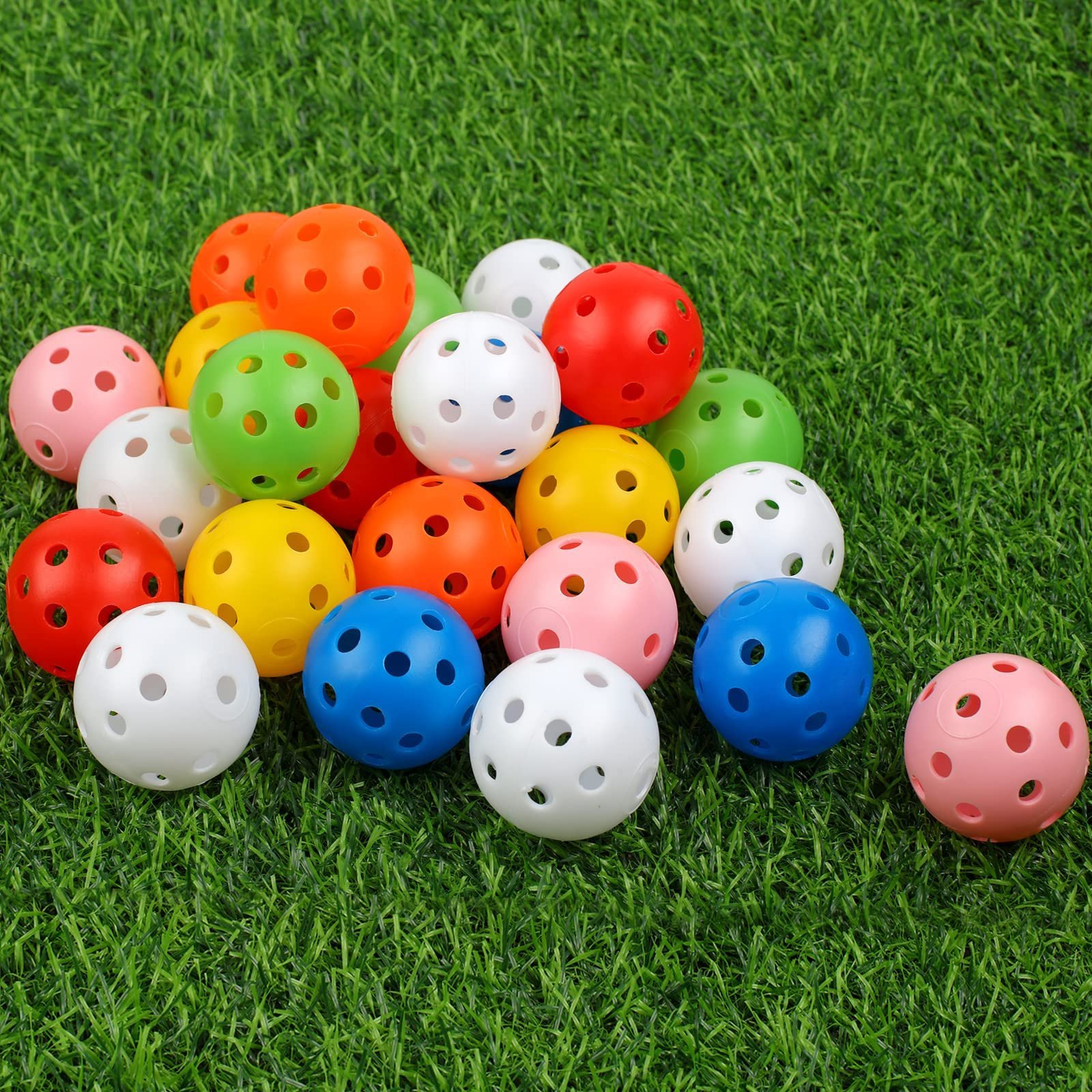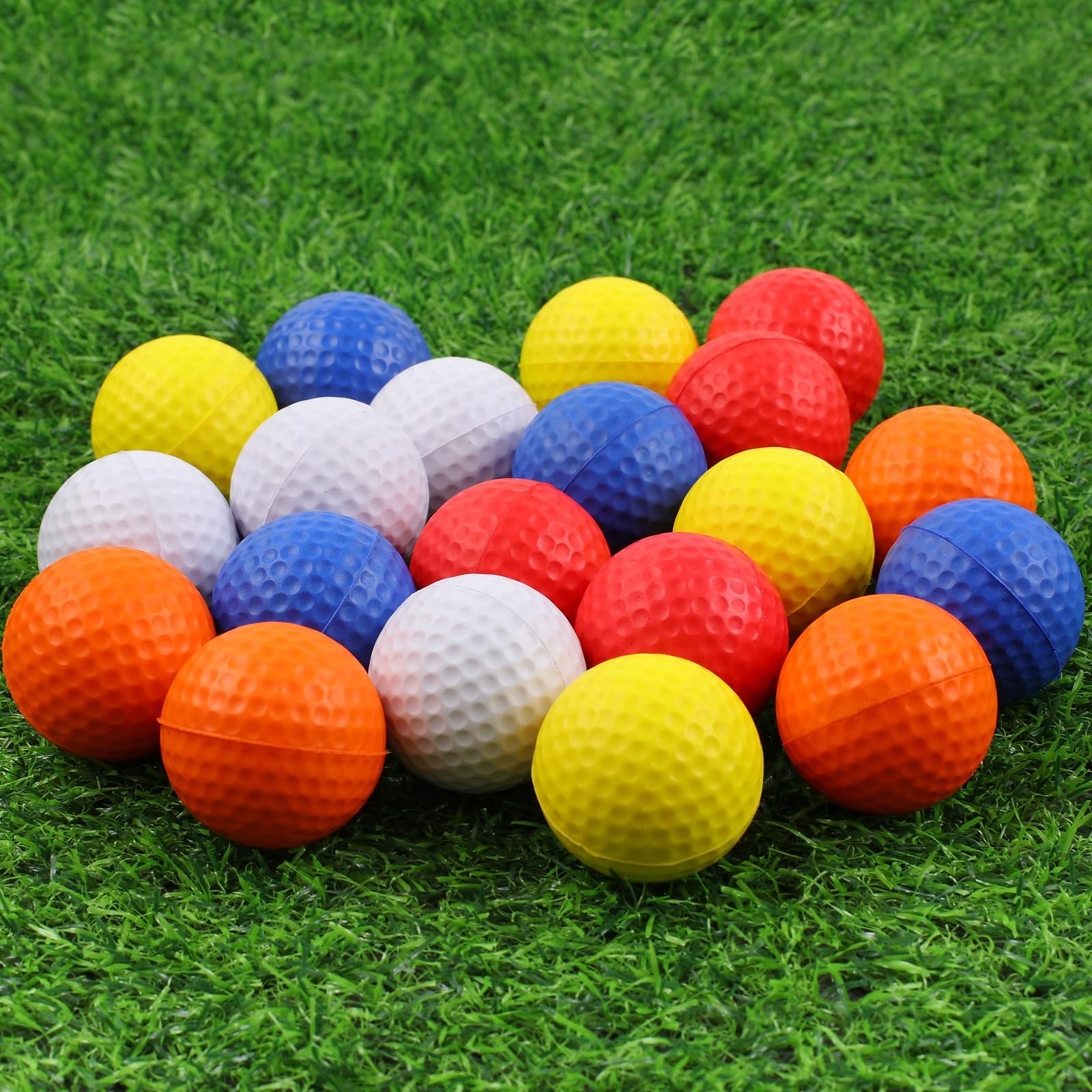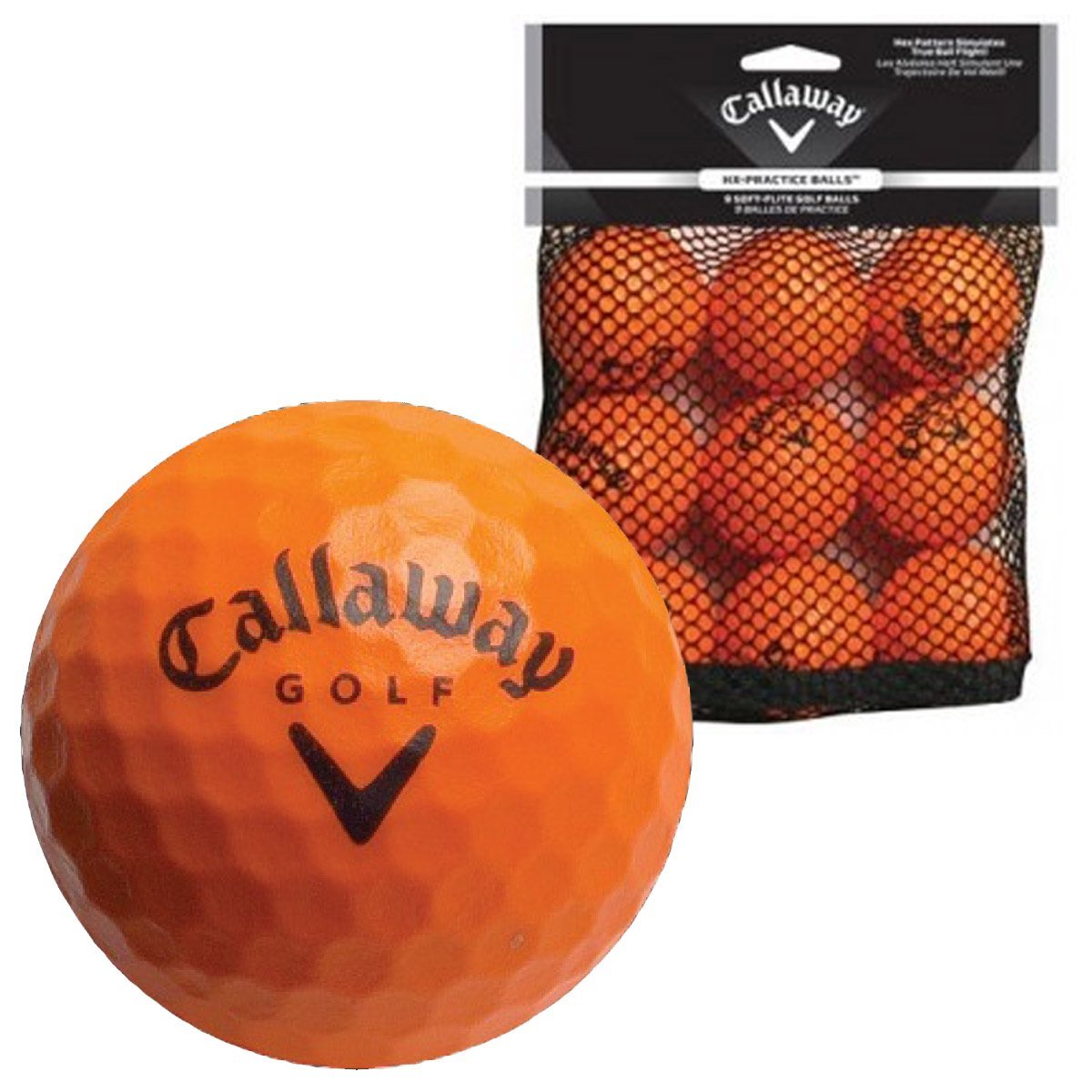Golf is a sport where precision and technique are essential, and practice is key to improving those skills.
Golf practice balls are designed to help players sharpen their swings and refine their shots without always having to hit the course.
They’re smaller, lighter, and often less expensive than standard golf balls, making them a great addition to any golfer’s practice routine, whether you’re a seasoned pro or just starting out.
When considering purchasing golf practice balls, it’s important to think about the material.
Some are made from foam, which is ideal for use in indoor settings due to their softer impact.
Others might be plastic, providing a closer simulation to real golf balls while still reducing the risk of damage.
Additionally, weight and flight characteristics are crucial.
Heavier practice balls tend to replicate the feel of a real ball more accurately, enhancing the realism of your practice session.
Choosing the right golf practice ball can make a significant difference in how effectively we hone our skills.
We spent countless hours researching and testing various golf practice balls to identify the ones that provide the best feel and flight for effective practice sessions.
Top Golf Practice Balls
We’ve put together a selection of the best golf practice balls available.
Our picks will help sharpen your skills whether you’re practicing at home or on the range.
Joyberg Golf Practice Balls
A worthwhile purchase for any golfer looking to improve their skills, given the quality and versatility of these practice balls.
- Bright colors make them easy to locate on any terrain
- Durable polyurethane material ensures long-lasting use
- Lightweight design minimizes risk of property damage
- Simulated flight may not fully replicate real golf ball performance
- Limited flight distance may not satisfy some users
- Might feel too much like wiffle balls for those used to foam practice balls
Having recently tried Joyberg Practice Golf Balls, we find them to be a practical choice for both beginners and more seasoned golfers.
These balls come in eye-catching colors, making them easy to spot no matter where they land.
The sturdy construction is particularly impressive, as they can withstand countless practice sessions without showing signs of wear.
While perfect for backyard swings or indoor practice, they won’t travel very far, which helps avoid any unfortunate window-breaking incidents.
This makes them ideal for use in smaller spaces.
Still, those accustomed to the feel of regular golf balls might find them too similar to wiffle balls, which could be a disadvantage if you’re seeking a more authentic practice experience.
Overall, their balance of performance and safety makes them a handy addition to our collection of golf training aids.
Whether you’re working on your swing or looking to refine your technique in limited spaces, these practice balls prove themselves as a versatile tool.
Guirnd Foam Golf Balls
These foam golf balls offer a blend of durability and realistic play, making them a smart choice for those looking to enhance their practice sessions at home or in the backyard.
- Soft material mimics real ball pop off the clubface
- Vibrant colors prevent loss on grass
- Realistic dimple texture aids in accurate flight
- Not suitable for long-distance practice
- Firmness may surprise those expecting softer feel
- Pets might mistake them for toys
We found the Guirnd foam golf balls to be an excellent practice tool, especially in confined spaces.
As golf enthusiasts, we appreciate how these balls replicate the feel of a real ball on impact.
The colorful assortment ensures each ball is easily spotted, even if we end up chipping into the bushes.
The design is quite thoughtful, with their dimpled outer layer maintaining consistent spin and distance.
These characteristics help us work on precision without worrying about where the ball will land.
Their soft composition means they are neighbor-friendly, sparing windows from any possible mishaps.
These practice golf balls also serve double duty indoors, allowing us to refine our swings without leaving the living room.
Just be cautious around pets; they might want to join in on the fun!
GoSports Foam Golf Practice Balls
These foam golf balls offer a fantastic balance of realism and safety, making them a smart choice for both indoor and outdoor practice sessions.
- Resembles real golf balls in feel and flight
- Safe for indoor use, minimizing damage risk
- Lightweight and easy to find due to bright colors
- May fly farther than expected in limited spaces
- Less durable than some might prefer
- Limited by reduced flight distance for long clubs
Having tested these in our own backyard, we found these golf practice balls to be quite reliable.
The foam construction ensures they’re safe for indoor use, protecting windows and fragile items from accidental damage.
Their realistic dimples and feel are impressive, offering a near-genuine golfing experience without needing a full course.
The portability is a bonus; they come with a convenient storage tote, making it simple to keep them organized.
The vibrant colors make retrieval easy, which is especially useful when practicing in grassy areas.
While hitting them, the sound is satisfying, and they fly much like the real thing, only with limited distance.
On the flip side, their flight can sometimes be unpredictable when using longer clubs like a 3 wood.
This makes them more suited for mid-range practice.
If you’ve got ample space or a net, they’re perfect for improving your swing.
The GoSports Foam Golf Practice Balls are undoubtedly a valuable addition to our practice toolkit.
Callaway HX Practice Golf Balls
These golf practice balls are a solid choice for at-home practice due to their durability and safety features.
- Simulated flight mimics real ball behavior, helping improve accuracy.
- Durable foam construction ensures longevity.
- Includes a convenient mesh bag for easy transport.
- Limited distance may not suit long-range practice.
- Soft foam construction can feel different from real golf balls.
- High visibility colors may not appeal to all.
The HEX dimple pattern really stands out, helping to simulate a true ball flight over a shorter distance.
It’s perfect for practicing in confined spaces like backyards.
In our experience, the soft foam construction means these balls are safe to use nearly anywhere.
We found their bright colors make retrieval easy, though the aesthetics may not be for everyone.
The included mesh bag adds a practical touch, keeping things organized between practice sessions.
A word of caution: while perfect for full swings, they might not give the same feel during short chip shots.
Still, these practice balls remain a practical choice for honing your golf skills safely and effectively at home.
JAYA Practice Golf Balls
A great option for anyone wanting a safe and economical solution for practicing their golf swing at home.
- Affordable, helping us save on training costs
- Lightweight construction ensures safer practice
- Bright colors make locating balls much easier
- Limited flight might not suit those looking for complete realism
- Hollow design may affect the feel for true swing feedback
- Plastic material might not replicate the exact ball texture
Practicing with JAYA Practice Golf Balls has been a fantastic experience for us.
They offer an economical solution without compromising on quality.
The lightweight nature not only provides safety for indoor use but also allows us to practice without worrying about breaking anything.
We’ve found that the vibrant colors of these balls are a real game changer.
They make it incredibly easy to spot them across the yard, saving us the hassle of searching extensively after each practice session.
Plus, the thrill of hitting them and seeing their flight is unmatched, despite the limited distance.
While the design focuses on safety and cost-effectiveness, it does mean they may not mimic the real golf ball experience precisely.
Still, they deliver excellent value for those looking to improve their swing, especially when practicing in more confined spaces.
Buying Guide
Choosing the right golf practice balls can enhance our training sessions.
Let’s focus on what to consider when buying them.
Material: We should look for durable materials.
Options like foam and plastic are common.
Each has its benefits.
Foam balls are gentle and ideal for indoor use, while plastic ones provide a bit more flight.
Distance: Consider how far we need the balls to travel.
Limiting distance helps with practice in small spaces.
If we’re practicing outdoors, longer flight might be preferable.
Feel: The feel of the ball is important.
It should mimic real golf balls as closely as possible.
Testing a few types can help us find what suits our swing.
Visibility: Bright colors improve visibility, making it easier to track the ball’s trajectory.
This can be particularly useful when practicing in areas with lots of greenery.
Quantity and Price: Evaluate how many balls come in a pack.
Buying in bulk can be cost-effective, especially if we practice frequently.
Surface Consideration: For those practicing indoors, choosing balls that won’t damage surfaces is crucial.
This is where softer foam balls can shine.
Here’s a quick comparison:
| Feature | Foam Balls | Plastic Balls |
|---|---|---|
| Durability | Moderate | High |
| Distance | Short | Medium |
| Feel | Soft | Firm |
| Best For | Indoors | Outdoors |
Frequently Asked Questions
Dive into the world of golf practice balls with us as we explore the best options for backyard fun, differences between foam and regular balls, and what to consider for top performance.
We’ll uncover the specifics you need for an informed choice.
What are the best types of golf balls for backyard practice?
For backyard practice, foam and plastic golf balls reign supreme.
These types are designed to mimic the flight of real balls without the risk of damaging property.
Foam balls offer a softer feel, while plastic ones provide lightweight and durability.
How do foam golf practice balls compare to regular ones?
Foam practice balls are generally softer and travel a shorter distance than regular golf balls.
This design makes them excellent for safe practice at home.
They simulate the feel of a real ball, making them a choice for those looking to improve their swing without needing a full course.
Can you recommend some top-rated golf practice balls for limited flight?
We’ve found the Callaway HX Practice Balls and the PrideSports Foam Practice Balls gain frequent mention for their performance.
They deliver limited flight and realistic feel, perfect for those focused on sharpening skills in confined spaces without compromising on quality.
What should I look for in a high-quality practice golf ball?
When choosing practice balls, durability and realistic feel should be top of mind.
Look for materials that withstand repeated use, like sturdy plastic or quality foam.
Realistic flight patterns are also essential to provide meaningful feedback on your swing techniques.
Are there any differences between practice golf balls and those used at driving ranges?
Practice golf balls, whether foam or plastic, are typically constructed for limited flight compared to those on driving ranges.
Range balls are often heavier and more durable to endure constant use.
Practice balls focus more on safety and simulating a genuine playing experience within restricted areas.
How far can I expect a practice golf ball to travel compared to a regular ball?
Practice golf balls are designed to travel significantly less distance than regulation balls.
Generally, expect about one-third to one-half of the distance you would achieve with regular balls.
This feature allows safer practice in more restricted environments.
It also helps maintain focus on technique adjustment.






